|
Jamaica
is an island nation of the Greater Antilles, 240
kilometres (150 mi)
in length and as much as 85 kilometres (50 mi) in
width situated in the Caribbean
Sea. It is 635 kilometres (391 mi) east of the
Central American mainland, 150 kilometres (93 mi)
south of Cuba, and 180 kilometres (112 mi) west of
the island of Hispaniola, on which
Haiti and the
Dominican Republic are situated.
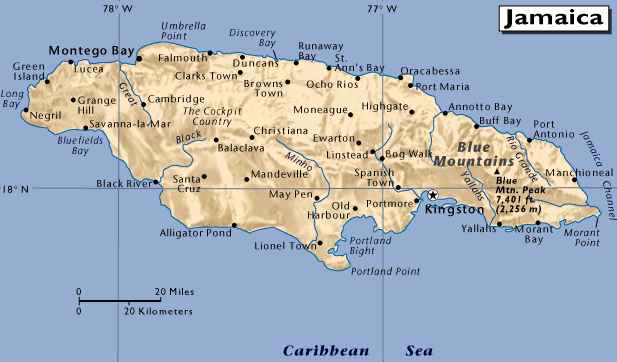
Map
of Jamaica
Its
indigenous Arawakan-speaking Taíno inhabitants named
the island Xaymaca, meaning either the "land
of springs," or the "Land of wood and
water." Formerly a Spanish
possession known as Santiago, then the British
West Indies Crown colony of Jamaica, the country's
population is composed mainly of the descendants of
former African
slaves. It is the third most populous Anglophone country
in the Americas, after the United
States and Canada.
History
The original Arawak or Taino people from South America first settled on the island between 4000 and 1000 BC. Although some claim they became virtually extinct following contact with Europeans, others claim that some survived for a while. There is very little trace of the Arawak culture, and the Jamaican National Heritage Trust is attempting to locate and document any evidence of the Arawaks.
Jamaica was claimed for Spain after Christopher Columbus first landed there in 1494. The English Admiral William Penn (father of William Penn of Pennsylvania) and General Venables seized the island in 1655. During its first 200 years of English (then British) rule, post Spanish rule, Jamaica became one of the world's leading sugar exporting nations and produced over 77,000 tons of
sugar annually between 1820 and 1824, which was achieved through the massive use of imported
African slave
labour. After the abolition of the slave trade the British imported Indian and Chinese indentured servants in the early 1800s as more cheap labour. The descendants of the Chinese and Indian indentured servants continue to reside in Jamaica today.
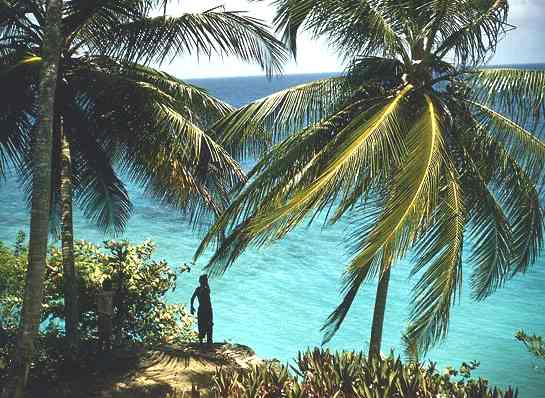
Jamaican
sea view and palm trees
By the beginning of the 19th century, the United Kingdom's heavy reliance on slavery resulted in blacks (Africans) outnumbering whites (Europeans) by a ratio of almost 20 to 1, leading to constant opportunities for revolt. Following a series of rebellions, slavery was formally abolished in 1834, with full emancipation from chattel slavery declared in 1838.
During the 1800’s a number of botanical gardens were established. These included the Castleton Garden in 1862 (set up to replace the Bath Garden which was established during the late 1770s and where breadfruit brought to Jamaica by
Captain William Bligh was planted but which was subject to flooding), the Cinchona Plantation in 1868 and the Hope Garden during 1874.
In 1945, Sir Horace Hector Hearne became Chief Justice and Keeper of the Records in Jamaica and sat in the Supreme Court, Kingston between 1945 and 1950/1951 before going on to become Chief Justice in Kenya.
Jamaica slowly gained increasing independence from the United Kingdom. In 1958, it became a province in the Federation of the West Indies, a federation among all of the British West Indies. Jamaica attained full independence by leaving the federation in 1962.
Strong economic growth averaging about six percent per annum marked its first ten years of independence under conservative governments led successively by Prime Ministers Alexander Bustamante, Donald Sangster and Hugh Shearer. The growth was fueled by strong investments in bauxite/alumina, tourism, manufacturing industry and to a lesser extent the agricultural sector. However, the initial optimism of the first decade was accompanied by a growing sense of inequality and a sense that the benefits of growth were not being experienced by the urban poor. This, combined with the effects of a slow-down in the global economy in 1970, prompted the electorate to change the government, electing the PNP (People's National Party) in 1972. However, despite efforts to create more socially equitable policies in education and health, Jamaica continued to lag economically, with its gross national product having fallen in 1980 to some twenty-five percent below the 1972 level. Rising foreign and local debt accompanied by large fiscal deficits resulted in the invitation of the
International Monetary Fund (IMF) financing from the USA and others, and the imposition of
IMF austerity measures (with a greater than 25% interest rate per year).
Economic deterioration continued into the mid 1980s, exacerbated by the closure of the first (Alpart) and third (Alcoa) largest alumina producers, significant reduction in production by the second largest (Alcan), the exit of Reynolds Jamaica Mines Ltd from the Jamaican industry and reduced flows from tourism. During the 1980s Jamaica was still a prosperous country though increases in crime and petty theft began to weigh on the island.
The early capital of Jamaica was Spanish Town in the parish of St. Catherine, the site of the old Spanish colonial capital. The Spanish named the town Santiago de la Vega. In 1655 when the English captured the island, much of the old Spanish capital was burned by the invading troops. The town was rebuilt by the English and renamed Spanish Town. It remained the capital until 1872, when the city of Kingston was named the capital.
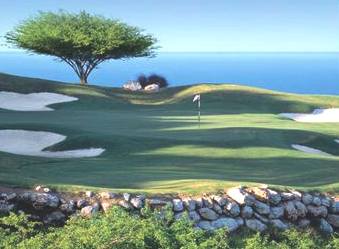
Government and politics
Jamaica is a constitutional monarchy with the monarch being represented by a
Governor-General. The head of state is Queen Elizabeth
II, who officially uses the title "Queen of Jamaica" when she visits the country or performs duties overseas on Jamaica's behalf. See Jamaican Royal Family. The Governor-General is nominated by the Prime Minister and the entire Cabinet and appointed by the monarch. All the members of the Cabinet are appointed by the Governor-General on the advice of the Prime Minister. The monarch and the Governor-General serve largely ceremonial roles, apart from their potent reserve power to dismiss the Prime Minister or Parliament.
Jamaica's current Constitution was drafted in 1962 by a bipartisan joint committee of the Jamaican legislature. It came into force with the Jamaica Independence Act, 1962 of the United Kingdom
Parliament, which gave Jamaica political independence. This was followed by a reformation of the island's flag.
Inside the Jamaican ParliamentThe Parliament of Jamaica is bicameral, consisting of the House of Representatives (Lower House) and the Senate (Upper House). Members of the House (known as Members of Parliament or MPs) are directly elected, and the member of the House of Representatives who, in the Governor-General's best
judgement, is best able to command the confidence of a majority of the members of that House, is appointed by the Governor-General to be the Prime Minister. Senators are appointed jointly by the Prime Minister and the parliamentary Leader of the Opposition.
In February 2006, Portia Simpson-Miller was elected by delegates of the ruling People's National Party (PNP) to replace P. J. Patterson as President of the Party. At the end of March 2006 when Patterson demitted office, Simpson-Miller became the first female Prime Minister of Jamaica. Former Prime Minister Patterson had held office since the 1992 resignation of Michael Manley. Patterson was re-elected three times, the last being in 2002.
On 3 September 2007, Bruce Golding of the Jamaica Labour Party was voted in as Prime Minister-Designate after achieving a 33 - 27 seat victory over Portia Simpson-Miller and the PNP in the 2007 Jamaican general election. Portia Simpson-Miller conceded defeat on the 5 September
2007. On 11 September 2007, after being sworn in by Governor-General Kenneth Hall, The Hon. Bruce Golding assumed office as Prime Minister of Jamaica.
Jamaica has traditionally had a two-party system, with power often alternating between the People's National Party and Jamaica Labour Party
(JLP). However, over the past decade a new political party called the National Democratic Movement
(NDM) emerged in an attempt to challenge the two-party system. Unfortunately, the NDM has almost become irrelevant in the two party system as it garnered only 540 votes of the over 800,000 votes cast in the September 3 elections. Jamaica is a full and participating member of the Caribbean Community
(CARICOM).
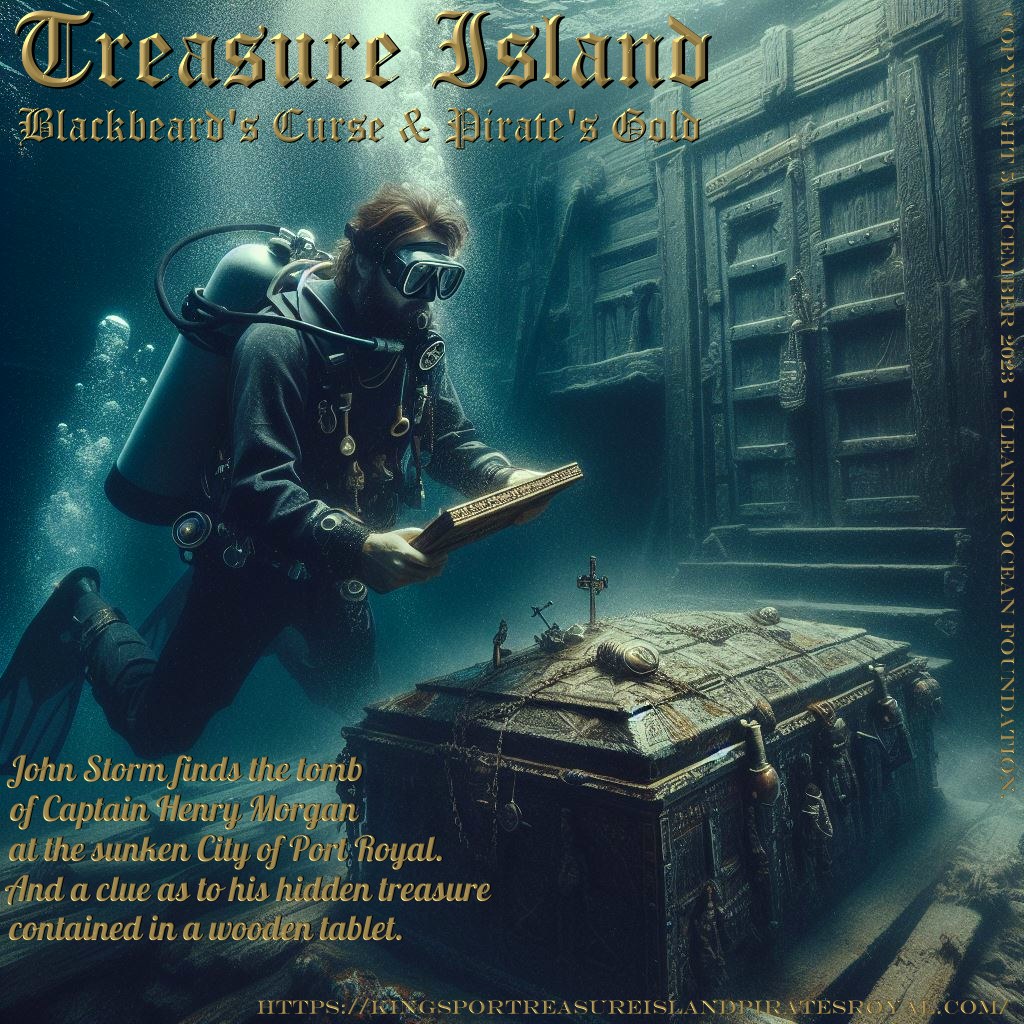
BLACKBEARD'S CURSE AND PIRATES GOLD
- PLOT SUMMARY: At the request of Blue Shield ( UNESCO), John Storm surveys the sunken Caribbean city of Port Royal, Jamaica, with the
Elizabeth
Swann, in his capacity as marine archaeologist, following a worrying earth tremor, when he discovers the resting place of former buccaneer
Sir Henry Morgan who passed in 1688. This news reaches England (BBC Jill Bird - world service) where Lord Huntington believes that the engraving
John Storm has found puts them on a parallel course, where the ocean adventurer could help unravel a parchment his family have been guarding since Blackbeard's death in 1718, 300 years earlier. In London, Lord Huntington, of the British Geographical Society (BGS), learns of this, and realizes the find could help him decode a parchment handed down through generations of his family, as a map, that once belonged to Blackbeard, telling the whereabouts of the buried treasure that remained undiscovered on Skeleton Island; thought to be an unmarked island. Commander James Maynard RN, & the BGS fund Operation Hispaniola, doomed to failure, but Storm is persuaded by Huntington to assist further, then reveals his map, taking them to Santa Catalina & Isla Providencia, unfortunately ravaged by Hurricane Iota, where mutineer John Long kidnaps
Cleopatra and
Dan
Hawk, and Maynard joins forces with the Spanish Navy to capture the Elizabeth Swann, along with the Aztec Gold and Skull. John Storm finds Morgan's treasure and secures a salvage deal with Panama and Mexico, evading a blockade by British and Spanish warships, and retaking the Swann. Maynard is then charged with misconduct and absconds, while the pirates sail into the Bermuda Triangle, not to be seen again.
PART
I
SCENE
1. THE
BATTLE OF OCRACOKE - North Carolina Historic
flashback - 1718, 22nd November, a British naval
taskforce led by Lieutenant
Robert Maynard lay in wait for Edward Teach
(Blackbeard), beheading the troublesome pirate after a
long and bloody swordfight, including severval gunshots
wounds by way of a torturous interrogation. As Blackbeard
expires on the deck of the Adventure,
he curses the English sailors and their kin, taking the
secret of his treasure with him to the Devil.
SCENE
2. EARTHQUAKE
JAMAICA - Present Day - An earthquake
hits Port Royal, disturbing the sunken city. Underwater
scenes of chaotic movement ripples, what is left of
buildings rocking. A Palisadoes cemetery opening an
entrance to Henry Morgan's mausoleum.
SCENE
3. BLUE
SHIELD ENGLAND - England - Blue
Shield, Newcastle University. John Storm is called
to Jamaica urgently, requested by UNESCO,
to catalogue the archaeological remains of the
underwater city, using the Elizabeth Swann's ultra
modern array of subsea survey sensors, worried that
another quake threatens to wipe out all records. They
plan to make the submerged city a UNEP
World
Heritage Site.
SCENE
4. HENRY
MORGAN'S DEATH - Historic flashback - Henry Morgan
musing taking of a prize ship as a pirate off coast of
Venezuela and Panama, while he is working his sugar cane
plantation in drunken condition, he has a heart attack.
Cut to his funeral ceremony at Palisadoes
cemetery, old Port Royal.
SCENE
5. SUNKEN
CITY SURVEY - Caribbean Sea Present Day - The
Swann's sensors scan the ocean bed, revealing what turns
out to be the mausoleum and tomb containing remains of
the former Governor of Jamaica. It is under threat of
imminent and dangerous collapse.
SCENE
6. JUNE
1692 TSUNAMI - Jamaica Historic flashback - June
7th, an earthquake hits Port
Royal, then a tsunami
washes the pirate haven under the sea, covering Henry
Morgan's mausoleum. Washing clean the sins of the wicked
city.
SCENE
7. HENRY
MORGAN'S COFFIN - Jamaica Present Day - John Storm
investigates target underwater areas using an ROV,
then dives the site, coming face to face with Sir
Henry's macabre skeletal remains. Then discovering
secret compartment in his coffin, and interesting wooden
engraving.
PART
II
SCENE
8. BBC
JILL BIRD - London. "The intrepid
conservationist, Mr John Storm .." News of the
archaeological find and condition of lost Henry Morgan,
pirate's remains - saved. "And for those of you
wondering, there was no treasure."
SCENE 9. OPERATION
HISPANIOLA - Lord Huntington acquires funding from
the British
Geographical Society, with Royal Navy interest in
the background, for an expedition to recover relics in
the Caribbean, a shipwreck rich in archaeologically
important artifacts. Though his secret agenda is to
piggy back John's operation in the search for
Blackbeard's mythical hoard and the supposedly cursed Golden
Skull. Huntington purchases an old Antarctic survey
ship, renaming it 'Hispaniola'.
SCENE
10. SHIP'S
COOK - William Gray helps John Long and his band of
cut-throats to crew for Huntington's Hispaniola, on the
basis of purloined data from a UNESCO report on a
description of Henry Morgan's wooden engraving. John
Long poses as a cartographer, but proves to be a dab
hand on the galley. He is elected ship's cook.
SCENE
11. ARCHAEOLOGICAL
SOS - Huntington contacts John Storm, asking for
help with the supposed shipwreck survey - meet in the
Caribbean. Asking for ES assistance as portable lab,
appealing to Storm's general interest in such matters.
At this stage John has no idea about the parchment
Huntington has been keeping a secret, thinking he is
cosher, as a BGS
bigwig.
SCENE
12. SKELETON
ISLAND - Intrigued as to the map now proffered by
Lord Huntington, John agrees to switch attention to the
new location, even though not that far off the cost of
Panama. The map, though not the original parchment
recovered from Blackbeard's Adventure, is sufficiently
alluring after checking historical accuracy, as to be
believable. John keeps the information recovered from
Morgan's casket to himself, genuinely unsure if it
relates to the mysterious map - and just in case there
are any heritage assets to safeguard, though both men
probe each other for more clues continuously. Commander
Maynard has bugged the Hispaniola, so knows of their
intended location. Speeds to Caribbean.
SCENE
13. SANTA
CATALINA - The Colombian Archipelago including San
Andreas, Santa Catalina and Providence Islands, is
swarming with naval ships. Colombian,
Mexican,
Panamanian
and Nicaraguan
navies routinely patrolling close by, triggered by the
discovery of Henry Morgan's ship 'Satisfaction'
at Lajas Reef between 2008-10, the military of these
countries have been alive to the possibility of a claim
on the Aztec
gold, looted by the Spanish
Conquistadors. Then re-acquired by the Welsh
privateer momentarily in 1671, to be lost again in time
again.
SCENE
14. TREASURE
ISLAND - Rendezvous at Muelle de Barcos, crew
asked to remain on docked Hispaniola. Dan and Cleopatra
to remain on Swann. But Long shadows Huntington and
Storm, as they seek to identify map landmarks. Mostly
erased by Hurricane
Iota. Huntington is forced to reveal other clues, not
included on duplicate map. They find a cave full of
pirate skeletons, and a golden skull. John Longstride
thinks this is location of Blackbeard's/Morgan's
treasure. He noted John's strength in moving some large
rocks, impossible for an ordinary man to move.
Huntington also surprised at the extraordinary feats.
PART
III
SCENE
15. KIDNAP
- Longstride orders Black
Jack and Billy
Bones to kidnap Dan and Cleopatra going onboard as
supposed friendlies - then lock in Hispaniola (then
anchored in new location) cabin tied up with Tremaine,
to be used as hostage leverage. Then, to steal the
Elizabeth Swann. The pirates think they have control of
the Swann, but Hal allows that illusion, not wanting to
Taser the illicit guests until Dan and Cleopatra
are safely recovered. Hal alerts John to events via BioCore,
when Longstride tips his hand, give us the map, golden
skull and cave contents and we'll release hostages
Hispaniola and return Swann.
SCENE
16. DOUBLE
CROSS - Maynard does deal with Spanish
Navy to blockade south-west Caribbean & Santa
Catalina/Providence islands, to prevent John or
Huntington returning to Atlantic with
Blackbeard's/Morgan's gold - which they consider to be
theirs - split 50-50. They are prepared to board or sink
Swann and/or Hispaniola - to take as prize ships.
Nicaragua remains neutral. Mexican and Panamanian
governments decline offer to join group. Express
concerns, as to cultural heritage, where technically a
Colombian Archipelago surrounded international waters,
hence they consider blockade, a pseudo act of piracy.
Hal intercepts messages as watching brief. Maynard
offers Longstride a deal for Aztec
Golden Skull, but John Long will will not agree to
harming of Dan or Cleopatra. He does secure safe passage
through blockade.
SCENE
17. BLACKBEARD'S
CURSE - Threatened once again, John retakes Swann,
actually Hal immobilizes Black Jack and Billy Bones.
They (JS & Swann) then rescue prisoners on
Hispaniola. Hal locating new anchorage. Huntington and
Tremaine clap Longstride, Boon and Bones in irons on
Hispaniola. The Hispaniola heads to Muelle de Barcos,
to hand pirates over to authorities. But, the pirates
escape, purloin a boat from dock, then go to cave and
take the Golden Skull, despite Blackbeard's Curse -
pushing on to Maynard's ship to deliver Golden Skull,
thence through blockade, into Caribbean.
SCENE
18. MORGAN'S
TREASURE SHIP - John deciphers code on wooden
carving with help from Dan and Cybercore
Genetica. Putting the Swann into stealth mode, so
invisible to blockade, John dives to find the
privateer's sunken treasure, thinking in cave, but
actually discovers a whole ship, laden with gold, silver
and gemstones; huge cargo. He videos ship in water, and
holds as evidence and schedule of contents. But does not
remove anything from the wreck.
SCENE
19. BILLION
DOLLAR DEAL - John opens negotiations with Peru,
Colombia, Ecuador and Panama, keeping Blue
Shield in the loop. He plays them video of wreck,
all astonished. Panama (owners of wreck) offer 10% to
John for location. John accepts 5%, on proviso wreck is
preserved as heritage site, and treasure Aztec treasure
is recognised, in museum displays, to be divided
appropriately, himself as final arbiter with guidance
from Blue
Shield.
SCENE
20. BLOCKADE
RUNNER - The Swann navigates a course through a
blockade, proceeding in stealth mode, invisible to
radar. Not wanting to harm Spanish
Armada or Royal
Navy ships collaborating to capture John's ship. He
reports events to US
President. US remains neutral. John goes public with
Jill Bird world service broadcasting the find of
Morgan's treasure with exclusive footage of: 'Blade
Runner.' Commander Maynard is relieved of command, due
to be charged with misconduct. He absconds with Aztec
Golden Skull. Spain declines to comment on their
involvement. An embarrassed UK reserves their position.
SCENE
21. BERMUDA
TRIANGLE - Pirates boat last reported heading into
the Bermuda
Triangle, Colombian
Navy in pursuit - the mutineers disappear in a freak
storm, presumed loss of all hands: BBC and Sky News.
Never to be seen again, or so one would think.
Copyright ©
Cleaner Ocean Foundation and Jameson Hunter Ltd,
December 2023. All rights reserved.
Parishes
Jamaica is divided into 14 parishes, which are grouped into three historic counties that have no administrative relevance.
Surrey (county) in the east, containing the following parishes:
-
Kingston
-
Portland
-
Saint Andrew
-
Saint Thomas
Middlesex (county) in the center, containing the following parishes:
-
Clarendon
-
Manchester
-
Saint Ann
-
Saint Catherine
-
Saint Mary
Cornwall (county) in the west, containing the following parishes:
-
Hanover
-
Saint Elizabeth
-
Saint James
-
Trelawny
-
Westmoreland
Geography
Jamaica is the third largest island in the Caribbean, and the most populous English speaking island there. The island of Jamaica is home to the Blue Mountains inland, and is surrounded by a narrow coastal plain. Most major towns and cities are located on the coast. Chief towns and cities include the capital Kingston, Portmore, Spanish Town, Mandeville, Ocho Rios, Port Antonio, and Montego Bay.
The climate in Jamaica is tropical, with hot and humid weather, although higher inland regions have a more temperate climate. Some regions on the south coast, such as the Liguanea Plain and the Pedro Plains are relatively dry rain-shadow areas. Jamaica lies in the hurricane belt of the
Atlantic
Ocean; as a result, the island sometimes experiences significant storm damage. Hurricanes Charlie and Gilbert hit Jamaica directly in 1951 and 1988, respectively, causing major damage, destruction, and many deaths. Hurricane Ivan tracked just off the south coast of Jamaica in 2004, close enough to cause flooding and wind damage to coastal areas.

Jamaican
shops
Demographics
Ethnic origins
Jamaica's population consists mainly of people of West-African descent, comprising about 90.9% of the demographics. Other populations on the island are as follows: East Indian 1.3%, White 0.2%, Chinese 0.2%, Lebanese 0.1%, Multiracial 7.3%. Immigration from regions such as China, Colombia, South Asia, and other areas of the Caribbean have seen a steady
rise.
Language
The official language of Jamaica is English. Informally Jamaican Patois (pronounced patwah) is more commonly spoken by a majority of the population. Although British English or "The Queen's English" is the most obvious influence on patois, it includes words and syntax from various African languages (including Akan Ewe and Yoruba); other European languages (Spanish, Portuguese and French); Pre-Columbian Caribbean languages (Arawak); and Asian languages (Hindi and Mandarin) which is evidence of the long standing mixing of the people. In general, patois differs from English in pronunciation, grammar, nominal orthography and syntax, having many intonations to indicate meaning and mood. The language's characteristics include pronouncing /θ/ as [t] and /ð/ as [d], and omitting some initial consonant sounds, principally /h/. A number of linguists classify Jamaican Patois as a separate language, while others consider it to be a dialect of English.
Emigration
Over the past several decades, close to a million[citation needed] Jamaicans have emigrated, especially to the United States, the United Kingdom and Canada. This emigration appears to have been tapering off somewhat in recent years. However, the great number of Jamaicans living abroad has become known as the "Jamaican diaspora". There has also been emigration of Jamaicans to
Cuba.
Concentrations of expatriate Jamaicans are large in a number of cities in the United States, including New York City, Buffalo, the Miami metro area, Atlanta, Orlando, Tampa, Washington, D.C, Philadelphia, Hartford and Los Angeles. In Canada, the Jamaican population is centred in Toronto, and there are smaller communities in cities such as Montreal and Ottawa. In the United Kingdom, Jamaican communities exist in most large cities where they make up the larger part of the British-Caribbean community.
Religion
Christians make up 65.3% of Jamaica's population, with the majority being Protestant,[6] partly due to the influence of the Christian leadership in the British Anti-Slavery
Society, and the later influence of abolitionist denominations from the U.S. In spite of resistance by the slave
owners, the Christian faith spread rapidly as British Christian abolitionists and educated former slaves[9] joined local Jamaican Christian
leaders in the struggle against slavery. Today, the five largest denominations in Jamaica are: Church of God, Seventh-day Adventist, Baptist, Pentecostal and
Anglican.
The Rastafari movement was founded in Jamaica. This Back to Africa movement believes that Haile Selassie of Ethiopia was God incarnate, the returned black messiah, come to take the lost Twelve Tribes of Israel back to live with him in Holy Mount Zion in a world of perfect peace, love and harmony.
Bob Marley, a convert to the faith, spread the message of Rastafari to the world. There are now estimated to be more than a million Rastafarians throughout the world.
Non-Christian religions in Jamaica include Bahá'í[citation needed], Buddhism, Islam, and Hinduism. There is also a small population of Reform Jews in Jamaica who trace their roots back to early 15th century Spain and
Portugal. The West African folk cult of Obeah is found in poor urban and rural areas of Jamaica.
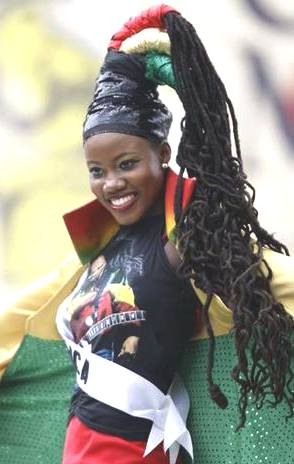
Miss
Jamaica
Culture
Though a small nation, Jamaica is rich in culture, and has a strong global presence. The musical genres reggae, ska, mento, rocksteady, dub, and, more recently, dancehall and ragga all originated in the island's vibrant popular urban recording industry.
Internationally known reggae musician Bob Marley was born in Jamaica and is very respected there. Many other internationally known artists were born in Jamaica including Lee "Scratch" Perry, Peter Tosh, Bunny Wailer, Jimmy Cliff, Dennis Brown, Desmond Dekker, Beres Hammond, Beenie Man, Shaggy, Grace Jones, Shabba Ranks, Supercat, Buju Banton, Sean Paul, I Wayne, Capleton, Bounty Killer and many others. Famous band artist groups that came from Jamaica include Black Uhuru, Third World Band, Inner Circle, Chalice Reggae Band, Fab Five, and Morgan Heritage. The genre jungle emerged from London's Jamaican diaspora. The birth of hip-hop in New York also owed much to the city's Jamaican community.
Ian Fleming, who lived in Jamaica, repeatedly used the island as a setting in the
James Bond novels, including Live and Let Die, Doctor No, For Your Eyes Only, The Man with the Golden Gun and Octopussy. In addition, James Bond uses a Jamaica-based cover in Casino Royale. So far, the only Bond film to have been set in Jamaica is Doctor No. However, filming for the fictional island of San Monique in Live and Let Die took place in Jamaica.
The American film Cocktail, starring Tom
Cruise, is one of the most popular films to depict Jamaica. A look at delinquent youth in Jamaica is presented in the 1970s cops-and-robbers musical film The Harder They Come, starring Jimmy Cliff as a frustrated (and psychopathic) reggae musician who descends into a murderous crime spree.
Errol Flynn lived with his third wife Patrice Wymore in Port Antonio in the 1950s. He was responsible for developing tourism to this area, popularising raft trips down
rivers on bamboo
rafts.
National symbols
National Bird — Doctor Bird (Green-and-black Streamertail, Trochilus polytmus)
National Flower — Lignum Vitae (Guaiacum officinale)
National Tree — Blue Mahoe (Hibiscus elatus)
National Dish — Ackee and Saltfish (dried salted Cod)
National Motto — "Out of Many, One People." (Unity among many cultures and races.)
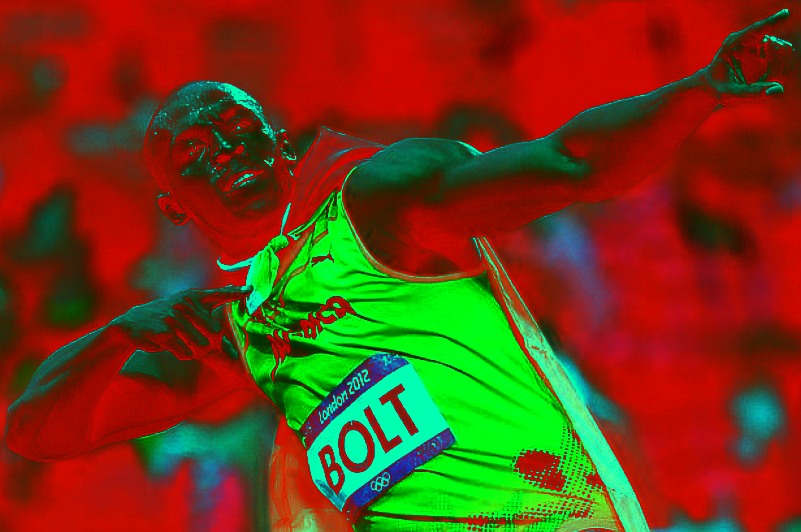
Sport
Jamaicans, in general, have a large interest in sports. Cricket, Football (soccer), athletics and horse-racing are several popular sports. The Jamaican national cricket team competes regionally, and also provides players for the West Indies. The national football team qualified for the 1998
FIFA World Cup. Jamaican athletics have been well represented at the Olympics, World Championships and other major athletics events over the years with leading athletes obtaining medals. Asafa Powell, world record holder in the 100m for men at 9.74s is among a rich heritage of Jamaican athletes to compete on the world stage. The bobsled team was once a serious contender in the Winter Olympics, beating many well-established teams.
There is a notable amount of golf in Jamaica, but it appears to be focused on the international tourism market. A typical first-class golf estate is the Tryall Club near Montego Bay. Also near to Montego Bay is the White Witch course, and Cinnamon Hill. Jamaican nationals do not appear to engage with golf to any great extent.
Education
The emancipation of the slaves heralded in the establishment of the Jamaican education system for the masses. Prior to emancipation there were few schools for educating locals. Many sent their children off to England to access quality education.
After emancipation the West Indian Commission granted a sum of money to establish Elementary Schools, now known as All Age Schools. Most of these schools were established by the
churches. This was the genesis of the modern Jamaican school system:
Presently the following categories of schools exist:
Early childhood – Basic, Infant and privately operated pre- school. Age cohort – 1 – 5 years.
Primary – Publicly and privately owned (Privately owned being called Preparatory Schools). Ages 5 – 10 years.
Secondary – Publicly and privately owned. Ages 10 – 16 years. The high
schools in Jamaica may be either single-sex or co-educational institutions, and many schools follow the traditional English grammar school model used throughout the British West Indies.
Tertiary - Community Colleges, Teachers’ Colleges, Vocational Training Centres, Colleges and
Universities - Publicly and privately owned. There are five local universities namely: The University of the West Indies (Mona Campus); the University of Technology, Jamaica formerly The College of Art Science and Technology (CAST); the Northern Caribbean University; the University College of the Caribbean and the International University of the Caribbean. Additionally there are many teacher training and community colleges.
Although there is no free education in Jamaica above the primary level, there are opportunities for those who can't afford further education in the vocational arena through the Human Employment and Resource Training-National Training Agency (HEART Trust-NTA)
programme and through an extensive scholarship network for the various universities.
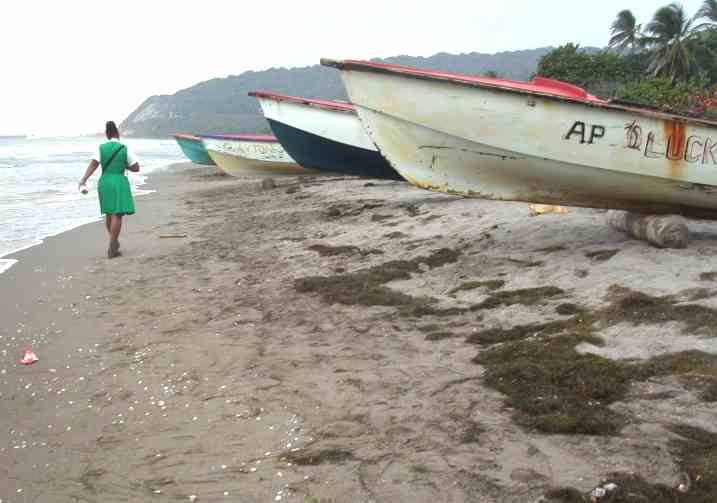
Jamaican
beach launched fishing boats
Economy
Jamaica is a mixed, free-market economy with state enterprises as well as private sector businesses. Major sectors of the Jamaican economy include agriculture, mining, manufacturing, tourism and financial and insurance services. Tourism and mining are the leading foreign exchange earners.
Supported by multilateral financial institutions, Jamaica has, since the early 1980s, sought to implement structural reforms aimed at fostering private sector activity and increasing the role of market forces in resource allocation. Since 1991, the Government has followed a programme of economic liberalization and stabilization by removing exchange controls, floating the exchange rate, cutting tariffs, stabilising the Jamaican
currency, reducing inflation and removing restrictions on foreign investment. Emphasis has been placed on maintaining strict fiscal discipline, greater openness to trade and financial flows, market liberalisation and reduction in the size of government. During this period, a large share of the economy was returned to private sector ownership through divestment and privatisation
programmes.
The macroeconomic stabilisation programme introduced in 1991, which focused on tight fiscal and monetary policies, has contributed to a controlled reduction in the rate of inflation. The annual inflation rate has decreased from a high of 80.2% in 1991 to 7.9% in 1998. inflation for FY1998/99 was 6.2% compared to 7.2% in the corresponding period in CUU1997/98. The Government remains committed to lowering inflation, with a long-term objective of bringing it in line with that of its major trading partners.
After a period of steady growth from 1985 to 1995, real GDP decreased by 1.8% and 2.4% in 1996 and 1997, respectively. The decrease in GDP in 1996 and 1997 was largely due to significant problems in the financial sector and, in 1997, a severe island-wide drought (the worst in 70 years) that drastically reduced agricultural production. In 1997, nominal GDP was approximately J$220,556.2 million (US$6,198.9 million based on the average annual exchange rate of the period).
Fishing boats and bauxite cargo ships share the waterways near Alligator Pond, JamaicaThe economy in 1997 was marked by low levels of import growth, high levels of private capital inflows and relative stability in the foreign exchange market.
Recent economic performance shows the Jamaican economy is recovering. Agricultural production, an important engine of growth increased 15.3% in third quarter of 1998 compared to the corresponding period in 1997, signaling the first positive growth rate in the sector since January 1997. Bauxite and alumina production increased 5.5% from January to December, 1998 compared to the corresponding period in 1997. January's bauxite production recorded a 7.1% increase relative to January 1998 and continued expansion of alumina production through 2009 is planned by
Alcoa. Tourism, which is the largest foreign exchange earner, showed improvement as well. In the third quarter of 1998, growth in tourist arrivals accelerated with an overall increase of 8.5% in tourism earnings in 1998 when compared to the corresponding period in 1997.
Jamaica has a wide variety of industrial and commercial activities. The aviation
industry is able to perform most routine aircraft maintenance, except for heavy structural repairs. There is a considerable amount of technical support for transport and agricultural aviation. Jamaica has a considerable amount of industrial engineering, light manufacturing, including metal fabrication, metal roofing, and furniture manufacturing. Food and beverage processing, glassware manufacturing, computer software and data processing, printing and publishing, insurance underwriting, music and recording, and advanced education activities can be found in the larger urban areas. The Jamaican construction industry is entirely self-sufficient, with professional technical standards and guidance.
Since the first quarter of 2006, the economy of Jamaica has undergone a period of staunch growth. With inflation for the 2006 calendar year down to 6.0% and unemployment down to 8.9%, the nominal GDP grew by an unprecedented 2.9%[3]. An investment programme in island transportation and utility infrastructure and gains in the tourism, mining, and service sectors all contributed this figure. All projections for 2007 show an even higher potential for economic growth with all estimates over 3.0% and hampered only by urban crime and public policies.
In 2006, Jamaica became part of the CARICOM Single Market and Economy
(CSME) as one of the pioneering members.
International trade
Exports: (1999) 1,238 billion $ (Natural resources: 55.7%, Food 19.1%, Bananas 4%, Chemicals 3.6%, Machinery 2.2%). The main export countries: USA 33.4% , United Kingdom 13.4%, France 5%, Germany 4%, Canada 14.1%, Netherlands 10.2%, Norway 5.8%, Japan 2.3%. Imports: (1999) 2,89 billion $ (Energy 50.5%, Machinery and Equipment 7.6%, Consumer goods 33.2%). The main import countries: USA 48.1%, Trinidad and Tobago 7.8%, Japan 6.9%, United Kingdom 3.7%, France 5%, Canada 3%. Exports and Imports (January 2007) Exports : (January 2007) Total Goods Exports 166,495 (US$000) (General Merchandise Exports 93.4%, Freezone Exports 2.6%, Goods Procured in Ports 4.0%) Imports: (January 2007) : Total Goods Import 511,015 (US$000); General Merchandise Imports 97.8%, Freezone Imports 0.3%, Goods Procured in Ports 1.8%)
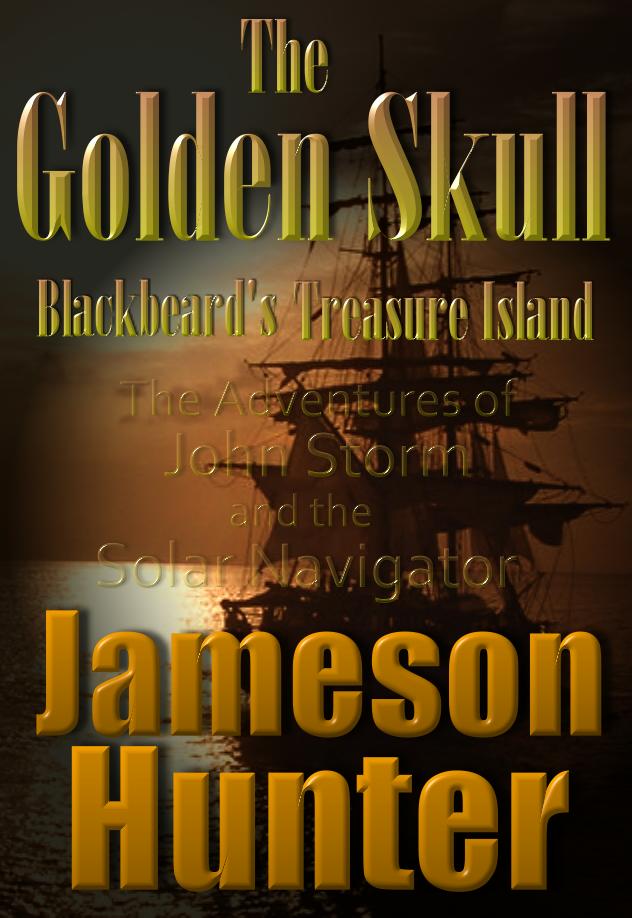
Infrastructure
Transport
The transportation infrastructure in Jamaica consists of roadways, railways, ship and air transport – with roadways forming the backbone of the island's internal transportation system.
The Jamaican road network is comprised of almost 21,000 kilometres of roads, of which over 15,000 kilometres is paved[18]. The Jamaican Government has, since the late 1990s and in cooperation with private investors, embarked on a campaign of infrastructural improvement projects, one of which includes the creation of a system of freeways, the first such access-controlled roadways of their kind on the island, connecting the main population centers of the island. This project has so far seen the completion of 33 kilometres of freeway.
Railways in Jamaica, as in many other countries, no longer enjoy the prominent position they once did, having been largely replaced by roadways as the primary means of transport. Of the 272 kilometres of railway found in Jamaica, only 57 kilometres remain in operation, currently used to transport
bauxite.
There are two international airports in Jamaica with modern terminals, long runways, and the navigational equipment required to accommodate the large jet aircraft used in modern air travel: Norman Manley International Airport in Kingston and Sangster International Airport in the resort town of Montego Bay. In addition there are local commuter airports at Tinson Pen (Kingston), Port Antonio, Ocho Rios, Mandeville, and Negril for internal flights only. Many other small, rural centers are served by private fields on sugar estates or bauxite mines.
Owing to its location in the Caribbean Sea in the shipping lane to the Panama Canal and relative proximity to large markets in North America and emerging markets in Latin America, Jamaica receives high container traffic. The container terminal at the Port of Kingston has undergone large expansion in capacity in recent years to handle growth both already realised as well as that which is projected in coming
years. In addition, as the island is a large exporter of bauxite, there is considerable freighter traffic.
Energy
Jamaica depends on petroleum imports to satisfy its national energy
needs. Many test sites have been explored for oil, but no commercially viable quantities have been
found. The most convenient sources of imported oil and motor fuels (diesel, gasoline, and jet fuel) are Mexico and Venezuela.
Jamaica's electrical power is produced by diesel (bunker oil) generators located in Old Harbour.
Jamaica imports approximately 80,000 barrels of oil energy products per
day, including asphalt and lubrication products. Just 20% of imported fuels are used for road transportation, the rest being used by the bauxite industry, electricity generation, and aviation.
Jamaica produces enormous quantities of hydrous ethanol (5% water content), most of which appears to be consumed as beverages, and none of it used as motor fuel. Facilities exist to refine hydrous ethanol feedstock into anhydrous ethanol (0% water content), but the process appears to be uneconomic at this time and the facility remains
idle.
Communication
Jamaica has a fully digital telephone communication system with a
mobile penetration of over
95%.
The country’s three mobile operators - Cable and Wireless (marketed as bmobile), Digicel, and Oceanic Digital (operating as MiPhone) - have spent millions in network upgrade and expansion. The Irish owned Digicel has become a generic term for mobile phones in Jamaica. Both Digicel and Oceanic Digital were granted licenses in 2001 to operate mobile services in the newly liberalised telecom market that had once been the sole domain of the incumbent Cable and Wireless monopoly. Digicel opted for the more widely used GSM wireless system, while Oceanic opted for the CDMA standard. Cable and Wireless, which had begun with TDMA standard, subsequently upgraded to GSM, and currently utilises both standards on its network.
With wireless usage increasing, land lines supplied by Cable and Wireless have declined from just over half a million to roughly about three hundred thousand as of
2006. In a bid to grab more market share,
Cable and Wireless recently launched a new land line service called HomeFone Prepaid that would allow customers to pay for minutes they use rather than pay a set monthly fee for service, much like prepaid wireless service.
A new entrant to the Jamaican communications market, Flow Jamaica, recently laid a new submarine cable connecting Jamaica to the United States. This new cable increases the total number of submarine cables connecting Jamaica to the rest of the world to four.
Two more licenses were auctioned by the Jamaican government to provide mobile services on the island, including one that was previously owned by
AT&T Wireless but never utilised, and one new licence. Industry analysts argue that with a near market saturation, there is very little room for new operators.
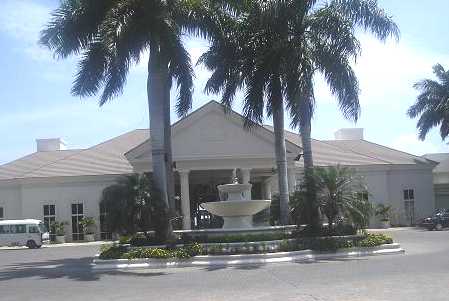
Military
The Jamaica Defence Force (JDF) is the small but professional military force of Jamaica. The JDF is based upon the British military model with organisation, training, weapons and traditions closely aligned with Commonwealth realms. Once chosen, officer candidates are sent to one of several British or Canadian basic officer courses depending upon which arm of service they are selected for. Enlisted soldiers are given basic training at JDF Training Depot, Newcastle or Up Park Camp, both in St. Andrew. As on the British model, NCOs are given several levels of professional training as they rise up the ranks. Additional military schools are available for speciality training in Canada, the United States and the United Kingdom.
The JDF is directly descended from the British West Indies Regiment formed during the colonial era. The West Indies Regiment was used extensively by the British Empire in policing the empire from 1795 to 1926. Other units in the JDF heritage include the early colonial Jamaica Militia, the Kingston Infantry Volunteers of WWI and reorganised into the Jamaican Infantry Volunteers in World War II. The West Indies Regiment was reformed in 1958 as part of the West Indies Federation. The dissolution of the Federation resulted in the establishment of the JDF.
The Jamaica Defence Force (JDF) comprises an infantry Regiment and Reserve Corps, an Air Wing, a Coast Guard fleet and a supporting Engineering Unit. The infantry regiment contains the 1st, 2nd and 3rd (National Reserve) battalions. The JDF Air Wing is divided into three flight units, a training unit, a support unit and the JDF
Air Wing (National Reserve). The Coast Guard is divided between sea-going crews and support crews. It conducts maritime safety and maritime law enforcement as well as defence-related operations. The support battalion contains a Military Police platoon as well as vehicle, armourers and supply units. The 1st Engineer Regiment provides military engineering support to the JDF. The Headquarters JDF contains the JDF Commander, Command Staff as well as Intelligence, Judge Advocate office, Administrative and Procurement sections.
In recent years the JDF has been called upon to assist the nation's police, the Jamaica Constabulary Force (JCF) in fighting drug smuggling and a rising crime rate which includes one of the highest murder rates in the world. JDF units actively conduct armed patrols with the JCF in high-crime areas and known gang neighbourhoods. There has been vocal controversy as well as support of this JDF role. In early 2005, an Opposition leader, Edward Seaga, called for the merger of the JDF and JCF. This has not garnered support in either organisation nor among the majority of citizens.
Crime
Some areas of Jamaica experience high levels of violent crime. Jamaica has had one of the highest murder rates in the world for many years, usually ranking third after Colombia and South Africa, according to UN
estimates. Jamaica's former Prime Minister P.J. Patterson described the situation as "a national challenge of unprecedented
proportions". In 2005, Jamaica had 1,674 murders for a murder rate of 64.10 per 100,000 people; that year Jamaica had the highest murder rate in the
world. The spate of gangland killings in the UK in particular, can be attributed to Yardie criminals illegally entering the country as part of the international drugs trade.
Tourism
Popular
beaches are found near Ocho Rios, Montego Bay, and
Negril, where mega-resorts draw many tourists. Get
special spa treatments, such as a massage, sugar-cane
body scrub, or papaya-banana facial, or get your hair
braided into cornrows.
Snorkeling
and scuba diving are popular water sports, and divers
will especially want to explore Port Royal, the city
which sank into Kingston Harbor after an earthquake in
1692. Other water activities include swimming with
dolphins, sailing, windsurfing, parasailing, and
fishing. On land, watch cricket and polo matches or
enjoy horseback riding, downhill biking, golf, or
birdwatching. Art lovers can visit Kingston's National
Gallery of Jamaica or watch artists at work in Ocho
Rios.
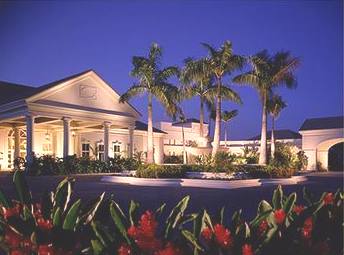
Jamaica
- Carlton Ritz hotel
Ritz
Carlton Hotel
This
Jamaica resort offers 427 spacious guestrooms and suites
in a five-story building facing the Caribbean Sea. All
provide balconies or terraces with sea or garden views.
Bedding includes Frette luxury linens, down pillows and
comforters, extra-thick mattresses, and featherbeds.
(Non-allergenic bedding available on request.)
Gray-and-white marble bathrooms have glass-door stall
showers, separate tubs, twin-sink vanities, phones, and
plush bathrobes. Other amenities include three
telephones (one cordless), 27-inch TVs, and radio/CD
players. (DVD players and VCRs available for rent.)
Wireless and wired high-speed Internet access are
available for surcharges. Bath-butler service
(surcharge) is available on request. Smoking is
permitted only on balconies/terraces.
While the hotel's architecture draws inspiration from
historic Rose Hall Great House, the 17th-century
English-style sugar-plantation residence 2.5 km (1.5 mi)
away, decor features contemporary Caribbean colors such
mint-green, canary-yellow, and salmon-pink complemented
in rooms and suites by multicolored area rugs on tile
floors. Crown molding and mahogany furniture add
colonial touches.
All
guests enjoy complimentary use of windsurfers, kayaks,
sailboats, and snorkeling gear, in addition to a
complimentary scuba-diving lesson in the pool.
Complimentary shuttles transport guests 8 km (5 mi) to
the Rose Hall Beach Club, an independently owned
facility offering parasailing, water skiing,
banana-boating, and other water sports (surcharges).
Scuba-diving and snorkeling trips, and scuba-diving
instruction/certification are also available at the
beach club for surcharges.
Located on a hillside 4 km (2.5 mi) away, the resort's
18-hole championship White Witch Golf Course features
rolling hills and panoramic sea views. Guests receive
preferred tee times and complimentary shuttle service to
the course. A practice facility includes two tees, two
bunkers, and a 1,022-square-meter (11,000-squae-foot)
putting green. Pros are available.
Commonwealth
of Jamaica
|

|
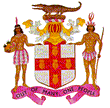
|
|
Flag
|
Coat
of arms
|
|
|
Motto:
Out of many, one people
|
|
Anthem:
Jamaica, Land We Love
Royal anthem: God
Save the Queen
|
|
|
|
Capital
|
Kingston
17°59′N
76°48′W
|
|
Largest city
|
Kingston
|
|
Official language(s)
|
English
|
|
Government
|
Parliamentary
democracy
|
|
-
Monarch
|
Elizabeth
II
|
|
-
Governor-General
|
Kenneth
Hall
|
|
-
Prime Minister
|
Portia
Simpson-Miller
|
|
Independence
|
|
|
-
From the UK
|
August
6, 1962
|
|
Area
|
|
|
-
Total
|
10,991 km² (166th)
|
|
|
4,244 sq mi
|
|
-
Water (%)
|
1.5
|
|
Population
|
|
|
-
July 2005 est.
|
2,651,000 (138th)
|
|
-
Density
|
252/km² (49th)
653/sq mi
|
|
GDP
(PPP)
|
2005
estimate
|
|
-
Total
|
$11.69
billion (131st)
|
|
-
Per capita
|
$4,300 (114th)
|
|
HDI
(2003)
|
0.738 (98th) – medium
|
|
Currency
|
Dollar
(JMD)
|
|
Time
zone
|
(UTC-5)
|
|
Internet
TLD
|
.jm
|
|
Calling
code
|
+1-876
|
LINKS
and REFERENCE
-
http://www.jamaicatravelandculture.com/
-
The
United Confederation of Taíno People. Taíno
Dictionary
-
Jamaican
National Heritage Trust
-
The
Monarchy Today: Queen and Commonwealth.
-
BBC
News: Jamaica confirms opposition win
-
Jamaicans
to Cuba
-
Jamaican
Census Figures
-
Samuel
Sharpe, Jamaica National hero
-
Antebellum
Slavery: Plantation Slave Life
-
Antislavery
Campaign in Britain.
-
Paul
Bogle, Jamaica National hero
-
George
William Gordon, Jamaica National hero
-
Samual
Sharpe, Jamaica National hero.
-
Jamaican
Census Figures
-
Dawes,
Mark publisher=Gleaner
Co. Jews hold firm Life goes on in Old Synagogue.
-
Dr.
Rebecca Tortello The
History of Jamaica - Captivated by Jamaica
-
Moravian
Church Contribution to Education in Jamaica..
-
Transforming
the Jamaican Education System.
-
The
CIA World Factbook - Jamaica
-
The
Jamaica Observer
-
Jamaica.
The World Factbook. CIA “Oil - production: 0 bbl/day
(2004 est.) Oil - consumption: 72,080 bbl/day (2004 est.)”
-
Petroleum
Corp of Jamaica, Petroleum Industry Statistics.
-
Petroleum
Corp of Jamaica, Petroleum Industry Statistics
-
Petroleum
Corp of Jamaica, Petrojam Ethanol
-
Doing
eBusiness in Jamaica, The Economist Intelligence Unit.
-
Nationmaster
Crime Stats
-
Washington
Post Foreign Service
-
Nationmaster
Crime Stats
-
Washington
Post Foreign Service
-
Official
website of Queen Elizabeth as Queen of Jamaica
-
The
Jamaica Information Service (JIS)
-
Office
of Disaster Preparedness and Emergency Management. Government of
Jamaica.
-
Conservation
in Jamaica
-
Library
and Information Association of Jamaica Website
-
Cabinet
Official Website
-
The
Jamaica Diaspora Organisation Website
-
The
North American Jamaican American Alliance
-
Google
News about Jamaica
-
Encyclopaedia
Britannica - Jamaica Country Page
-
CIA
World Fact Book entry on Jamaica
-
Satellite
maps on Google
-
Institute
of Jamaica
-
Jamaica
- CVM Live
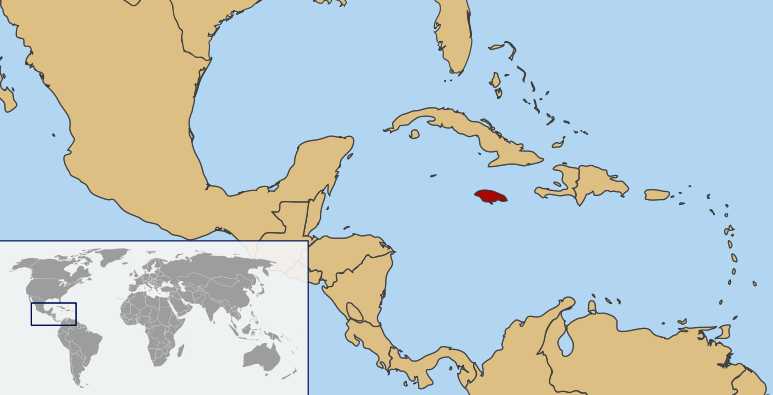
Jamaica
(in red) World location map
LINKS:
|
Jamaica - Youtube
|
Jamaica
Jungle - Youtube
|
|
Jamaica Kingston - Youtube
|
Usain
Bolt - Youtube
|
|
Adelaide
Aden
- Yemen
Afghanistan
Africa
Alaska
Albania
Algeria
Amazon
Rainforest
Amsterdam
Antarctic
Arctic
North Pole
Argentina
Asia
Athens
Atlantis
- Plato's Lost City
Australia
Austria
Aztecs
- Mexico
Baghdad
Bahamas
Bahrain
Bangladesh
Barbados
Beachy
Head, England
Belgium
Benin
Berlin
Bermuda
Black
Rock Desert
Bohemia
Bolivia Bonneville
Utah History
Bonneville,
Utah, USA
Brazil
Brighton
- West Pier
British
Columbia
Buckingham
Palace
Bulgaria
Burkina
Faso
Burma
California
Canada
Canary
Islands
Cape
Horn
Cape
Verde
Cape
York - Au
Caribbean
Cayman
Islands
Central
Africa
Chichester
Harbour
Chile
China
Columbo
- Sri Lanka
Columbia
Corfu
Cowes,
Isle of Wight
Croatia
Crooked
Island, Bahamas
Cuba
Cyprus
Czechoslovakia
Darwin
- Australia
Daytona
Beach
Denmark
Eastbounre
Pier, England
Earthquakes
Ecuador
Egypt
Eindhoven Estonia
Equator
Europe
Falkland
Islands
Falmouth,
Cornwall
Fiji
Finland
France
Galapagos
Islands
Geography
Links
Geography
Mountains
Geography
Records
Geography
Resources
Geography
Statistics
|
Germany
Ghana
Gibraltar
- Links
Greece
Greenland
Guinea
Guinea
Bissau
Hawaii
Holland
the Nertherlands
Hollywood,
California, LA
Hong
Kong
Hungary
Hurricanes
Iceland
India
Indonesia
Links
Iran
Iraq
Ireland
Isle
of Man
Isle
of Wight
- The
Needles
Israel
Italy
Ivory
Coast
Jakarta
- Java
Japan
Johannesburg
Jordan
Kent,
England
Kenya
Korea
Kuwait
Kyoto
Lanzarote,
Gran Canaria
Las
Vegas
Lebanon
Liberia
Libya
Liechtenstein
Life
on Earth
Lithuania
London
- Big
Ben
London
Eye
London
Houses
Parliament
London
- Buckingham
Palace
London
- Old
Bailey
London
- Overview
London
- The City
London
- Tower Bridge
London
- Trafalgar
Square
Luxembourg
Madame
Tussauds
Malaysia
Mali
Malta
Marshal
Islands
Mauritania
Maya
Empire -
Central America
Melbourne,
Australia
Middle
East
Melbourne,
Australia
Mexico
Monaco
Morocco
Mountains
Mumbai
Naples-
Italy
National
Geographic
Nepal
New
York
New
Zealand
Niger
Nigeria
North
Africa
Norway
Nova
Scotia
Oceans
and Seas
Oman
Pakistan
Palermo
- Sicily
Palestine
Palma
- Malorca
|
Panama
Canal - Links
Paris
Pendine
Sands
Peru
Philippines
Pisa,
Leaning Tower
Planet
Earth
Poland
Port
Moresby - PNG
Port
Said - Egypt
Portugal
Puerto
Rico
Qatar
Quebec
Rio
de Janeiro
Romania
Rome
Russia
Salt
Lake City
Samoa
Saudi
Arabia
Scandanavia
Scotland
Senegal
Siera
Leone
Singapore
Solomon
Islands
Somalia
South
Africa
South
America
Southampton
Spain
- Espana
Sri
Lanka - Links
Stonehenge
Sudan
Suez
Canal
Sundancer
Holiday Resort
Sussex,
England Index
Sweden
Switzerland
Sydney,
Australia
Syria
Tahiti
- Polynesia
- Links
Tahitian
- Men & Women Customs
Taiwan
Thailand
The
Gambia
Togo
Tokyo,
Japan
Tonga
- Polynesia
Toronto
Trinidad
- Lesser Antilles
Trinidad
and Tobago
Tsunami
Tunbridge
Wells, England
Tunisia
Turkey
Tuvalu
Islands
UAE
- United Arab Emirates
UK
Statistics
Ukraine
United
Kingdom
United
Kingdom -
Gov
USA
Uruguay
Vanuatu
Islands
Vatican
City
Venezuela
Venice
Vienna
Vietnam
Volcanoes
Volendam
Wales
Washington
D.C.
WAYN
Where Are You Now
Wealden
iron industry
Wendover
West
Africa
World
Peace Supporters
Yemen
Yugoslavia
Zurich
|

Solar
Cola drinkers care about planet
earth
..
Thirst for Life
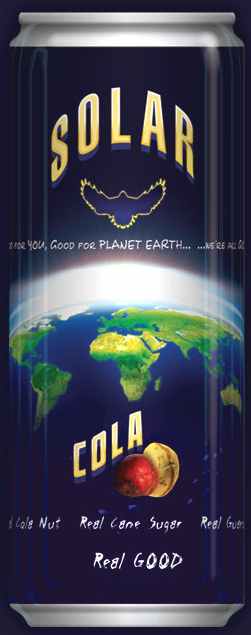
(330ml
Planet Earth can)
|












